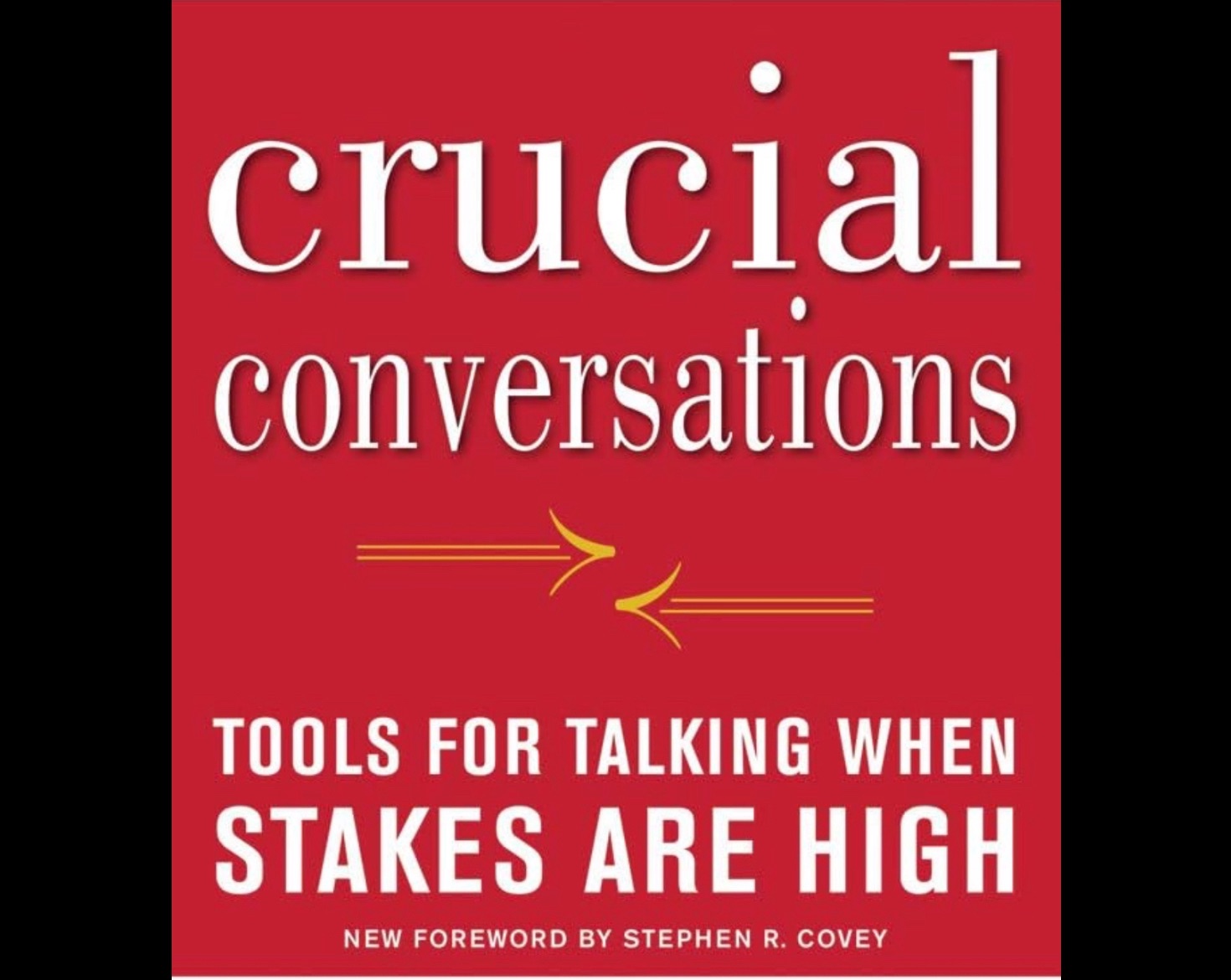“Crucial Conversations: Tools for Talking When Stakes Are High” provides valuable insights and practical tools for handling high-stakes, emotional, or challenging conversations. This book is essential for anyone looking to improve their communication skills, especially in situations where the outcome matters most. Below is a chapter-wise summary, capturing the essence of each section and its actionable advice.

Introduction: What is a Crucial Conversation?
The authors define a “crucial conversation” as a discussion between two or more people where stakes are high, opinions vary, and emotions run strong. These conversations can significantly impact our personal and professional lives. The book aims to equip readers with the tools to handle these conversations effectively, ensuring positive outcomes.
Chapter 1: “What’s a Crucial Conversation? And Who Cares?”
This chapter introduces the concept of crucial conversations and their importance. The authors explain how avoiding or mishandling these conversations can lead to misunderstandings, resentment, and missed opportunities. They emphasize the value of mastering these skills for personal and organizational success.
Chapter 2: “Mastering Crucial Conversations: The Power of Dialogue”
Dialogue is defined as the free flow of meaning between two or more people. The authors stress the importance of creating a safe environment for dialogue, where all participants feel comfortable expressing their views. They introduce the concept of “the pool of shared meaning,” where everyone’s ideas and opinions contribute to the conversation’s overall understanding.
Chapter 3: “Start with Heart: How to Stay Focused on What You Really Want”
In this chapter, the focus is on self-awareness. Before engaging in a crucial conversation, it’s essential to understand your motives and goals. The authors encourage readers to ask themselves questions like “What do I really want for myself, for others, and for this relationship?” This self-reflection helps maintain focus and clarity during the conversation.
Chapter 4: “Learn to Look: How to Notice When Safety Is at Risk”
The authors discuss the importance of recognizing signs that a conversation is becoming unsafe, such as silence or aggression. They introduce the concepts of “silence” (withdrawing from the conversation) and “violence” (forcing your opinions). Understanding these signs helps participants steer the conversation back to a safe and productive path.
Chapter 5: “Make It Safe: How to Make It Safe to Talk About Almost Anything”
Creating safety is crucial for productive dialogue. The authors suggest two key skills: “Apologize” when necessary to acknowledge and address any harm done, and “Contrast” to clarify misunderstandings by distinguishing what you don’t mean from what you do mean. These techniques help restore safety and encourage open communication.
Chapter 6: “Master My Stories: How to Stay in Dialogue When You’re Angry, Scared, or Hurt”
This chapter explores the role of emotions in crucial conversations. The authors introduce the “Path to Action” model, which explains how we move from seeing and hearing to feeling and acting. By understanding and controlling our stories (the narratives we create about events), we can manage our emotions and respond more constructively.
Chapter 7: “STATE My Path: How to Speak Persuasively, Not Abrasively”
STATE stands for Share your facts, Tell your story, Ask for others’ paths, Talk tentatively, and Encourage testing. This framework helps participants express their views clearly and respectfully, while also inviting others to share their perspectives. It promotes mutual understanding and collaborative problem-solving.
Chapter 8: “Explore Others’ Paths: How to Listen When Others Blow Up or Clam Up”
Listening is a critical component of effective dialogue. The authors provide strategies for encouraging others to share their views, even when they’re reluctant. Techniques like “Ask,” “Mirror,” “Paraphrase,” and “Prime” help create an open dialogue and uncover underlying concerns and feelings.
Chapter 9: “Move to Action: How to Turn Crucial Conversations into Action and Results”
The final chapter focuses on turning dialogue into action. The authors emphasize the importance of making clear decisions, assigning responsibilities, and setting deadlines. They introduce the “Who Does What by When” model to ensure accountability and follow-through.
Conclusion: “Putting It All Together: Tools for Preparing and Learning”
The book concludes with practical advice for preparing for crucial conversations and continuously improving communication skills. The authors encourage readers to reflect on their experiences, seek feedback, and practice the techniques learned.
Conclusion:
“Crucial Conversations: Tools for Talking When Stakes Are High” provides a comprehensive guide to navigating difficult conversations with skill and confidence. By mastering the principles of dialogue, self-awareness, and emotional intelligence, you can transform potentially challenging interactions into opportunities for growth and understanding. Implementing these tools will not only improve your relationships but also enhance your ability to lead and influence others effectively.

